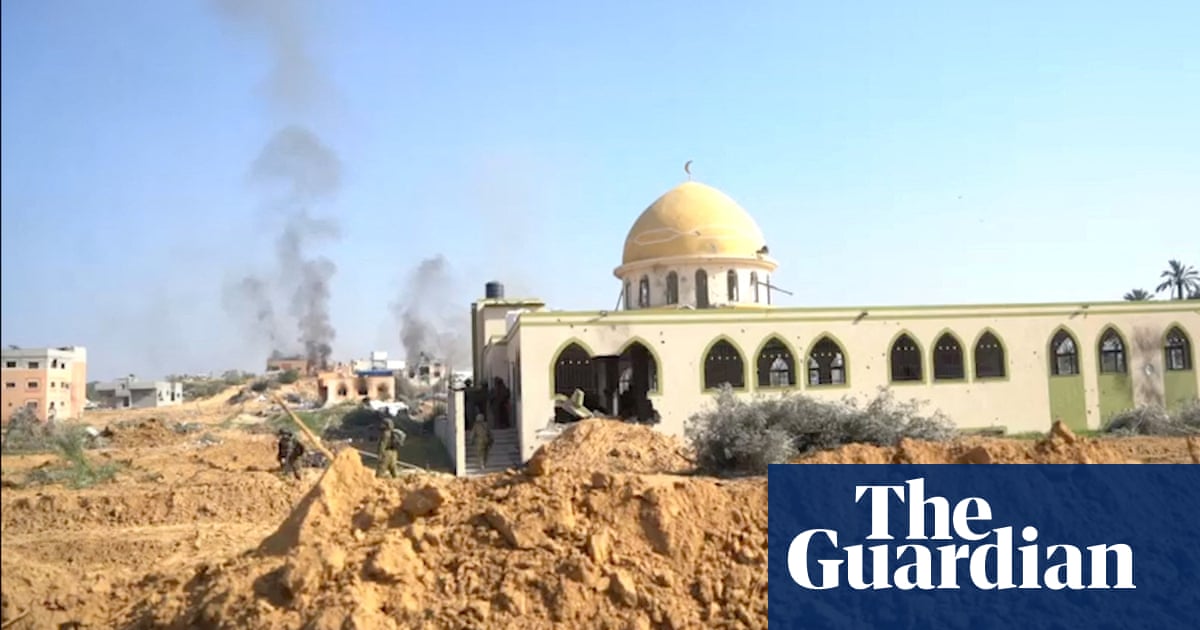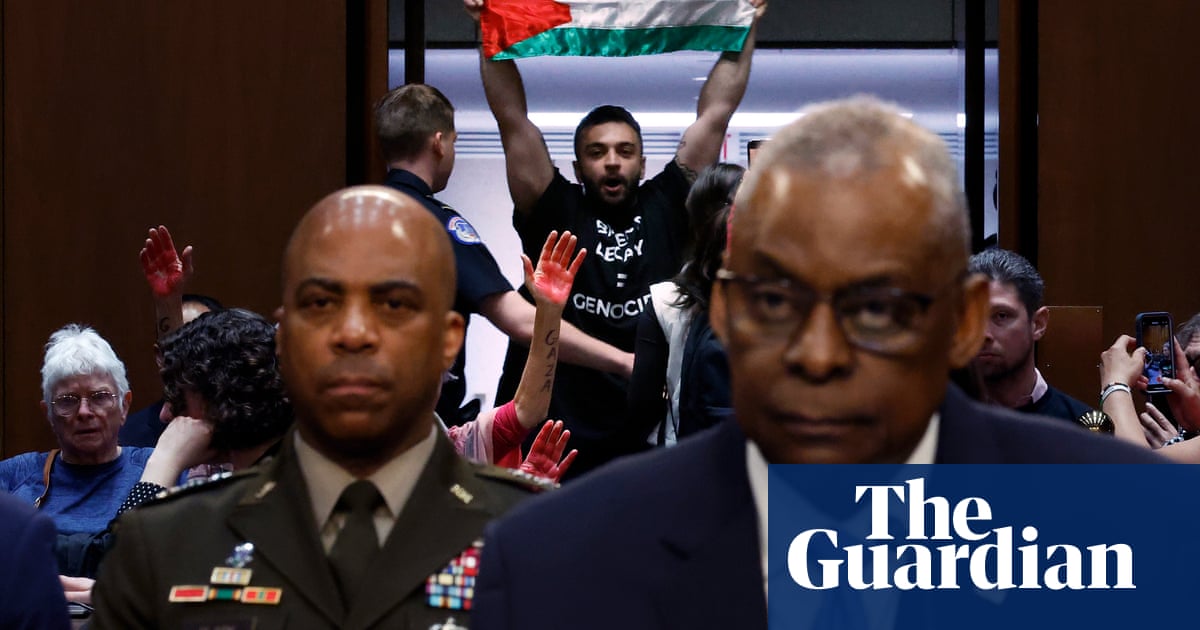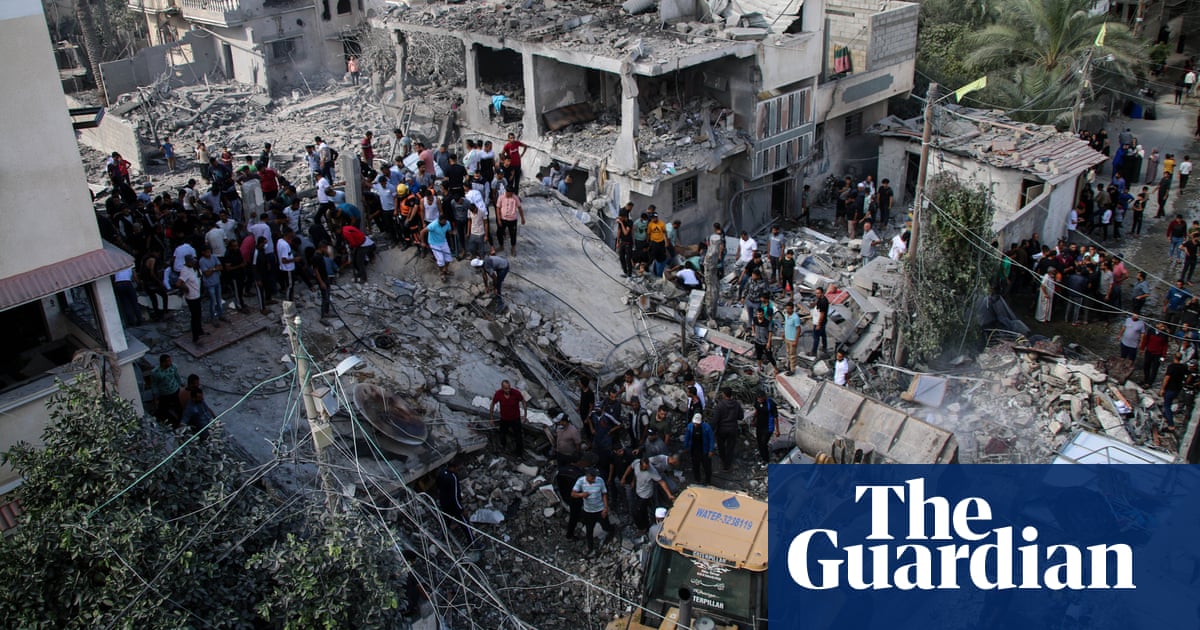
The Israeli defence minister has suggested that Israel would keep security control of Gaza after Hamas has been defeated with an undefined, Israeli-guided Palestinian body running day to day administration and the US, European Union and regional partners taking responsibility for the reconstruction of the territory.
Yoav Gallant revealed the plan to media on Thursday before a visit by Antony Blinken, the US secretary of state, and after growing pressure from the US for Israel to make proposals for postwar scenarios.
Under Gallant’s plan, which is not official policy and has yet to be submitted to other ministers, Israel’s offensive in Gaza would continue until hostages taken on 7 October were freed and Hamas’s “military and governing capabilities” dismantled.
Then, the outline says, a new phase would begin during which “Hamas will not control Gaza and will not pose a security threat to the citizens of Israel”, with unspecified Palestinian bodies – apparently local civil servants or communal leaders – assuming the territory’s governance.
The picture outlined by Gallant differs starkly from US calls for a revitalised Palestinian Authority to take control of the territory, ruled by Hamas since 2005, and a start to new negotiations towards creating a Palestinian state alongside Israel. Benjamin Netanyahu, Israel’s prime minister, has ruled out the US proposal.
Gallant said that Israel would reserve its right to operate inside the territory, but there would be “no Israeli civilian presence in the Gaza Strip after the goals of the war have been achieved”, the plan states.
“Gaza residents are Palestinian, therefore Palestinian bodies will be in charge, with the condition that there will be no hostile actions or threats against the state of Israel,” Gallant’s outline said, without giving details.
Earlier this week, Israeli media reported that military and intelligence officials favoured dividing Gaza into regions and sub-regions, with civil administration and the distribution of humanitarian aid in each area entrusted to local leaders seen as trustworthy.
As well as raising Gaza’s future governance in his forthcoming talks with Israel, Blinken this weekend is also expected to press for more aid for Gaza and seek to prevent any regional escalation.
The Biden administration has previously taken credit for coaxing Israel on several aid issues, including allowing limited gas and commercial trucks to enter. This week Israeli officials suggested further entry points from Israel may be opened to allow more aid to reach northern Gaza.
Gallant also indicated a more precise approach to targeting Hamas fighters and their leaders, in what appears to be another response to pressure from Washington.
The US has been pushing Israel to shift to lower-intensity military operations in Gaza that more precisely target Hamas, after nearly three devastating months of bombardment and ground assaults. In rare public criticism, President Joe Biden warned last month that Israel was losing international support because of its “indiscriminate bombing”.
Israel’s campaign in Gaza has killed more than 22,400 people, more than two-thirds of them women and children, according to the Hamas-run health ministry in the territory, with thousands more thought to be buried under rubble and tens of thousands wounded.
The offensive was launched after Hamas sent thousands of militants into southern Israel on 7 October, where they killed about 1,200 people, mostly civilians, and abducted about 240 others.
Health officials in Gaza said Israeli shelling on Thursday killed more than 20 Palestinians, including 16 in Khan Younis, a city in a southern coastal area packed with people who had fled from other parts of the territory.
Among the dead were nine children, they said. Separately, five Palestinians were killed in an Israeli airstrike on a car in the al-Nuseirat refugee camp, health officials told Reuters. Gaza residents said Israeli planes and tanks had also bombarded two other refugee camps, prompting many to head south.
Residents of Khan Younis told the Guardian on Friday that they could hear airstrikes or shelling “round the clock”.
Gallant’s statement said that in the north, Israeli forces would shift to a “new combat approach” in northern Gaza, which would emphasise raids, destruction of tunnels, “air and ground activities and special operations”. The aim would be “the erosion” of the remaining Hamas presence in the north while continuing to fight Hamas in the south of the territory “for as long as necessary”.
It was not immediately clear how this might differ from current operations.
There was no word on whether northern Gaza’s residents, who have almost all been driven south, would be allowed to return to their homes.
Another concern for the Biden administration has been calls by far-right members of Netanyahu’s cabinet for Palestinians to be encouraged to leave the Gaza Strip en masse.
The calls drew condemnation from Arab states, where they underscored fears that Israel wants to drive Palestinians out of land where they want to build a future state, as well as from the US, UK and European Union.
Gallant said there would be no Israeli civilians in Gaza, ruling out calls by some in Israel’s far right for a return of Jewish settlers to the territory.
Much of northern Gaza, which troops invaded two months ago, is in ruins. About 85% of Gaza’s 2.3 million people have been driven from their homes and forced to live in ever smaller areas. A quarter of the population are now starving because not enough supplies are entering, according to the UN.












